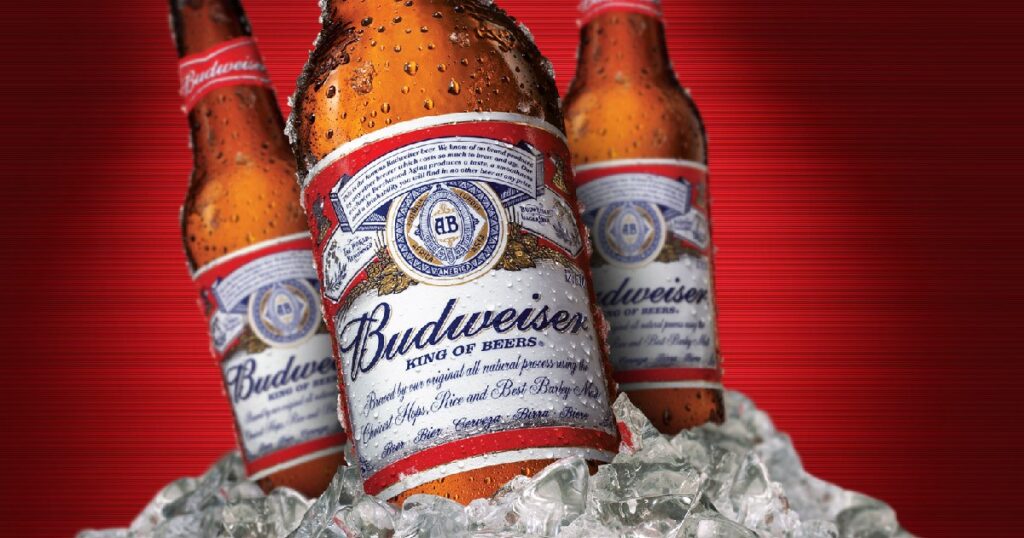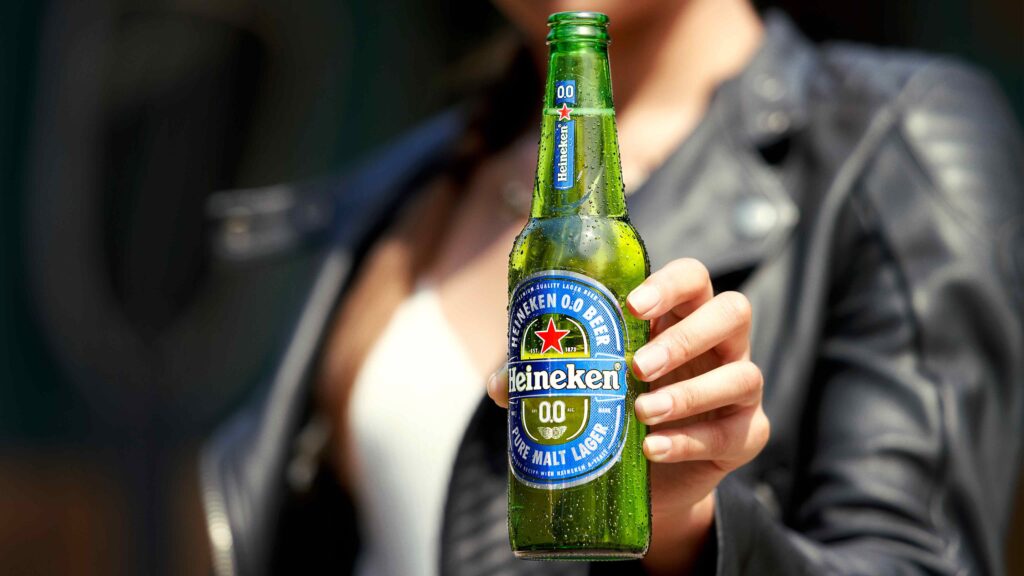
Beer stocks have long been a staple of the consumer goods sector, offering steady growth and reliable returns. Major companies like Anheuser-Busch InBev (BUD), Heineken (HEINY), and Molson Coors (TAP) dominate the industry, producing iconic brands such as Budweiser, Heineken, Stella Artois, and Coors Light. In 2024, beer stocks are benefiting from emerging trends in consumer behavior and market expansion, while also facing challenges that could shape the industry’s future.
Major Players in the Market
- Anheuser-Busch InBev (BUD): The world’s largest brewer, with a diverse portfolio of beers like Budweiser, Corona, and Stella Artois. While facing declining consumption in North America and Europe, it has aggressively pursued expansion in emerging markets like Asia and Latin America, helping to sustain growth.
- Heineken (HEINY): As the second-largest brewer globally, Heineken is known for its premium beers, including Heineken 0.0, which caters to the growing trend of non-alcoholic beers. It continues to invest in premiumization and international expansion, especially in Asia and Africa.
- Molson Coors (TAP): Known for Coors Light, Miller Lite, and craft offerings like Blue Moon, Molson Coors has diversified into non-beer segments, such as hard seltzers, energy drinks, and non-alcoholic beverages, to keep pace with evolving consumer preferences.
- Boston Beer Company (SAM): As the leader in the craft beer space, Boston Beer also spearheads the hard seltzer market with its Truly Hard Seltzer brand. While the company experienced explosive growth in the seltzer space, it is now adapting to slower growth rates by expanding into ready-to-drink cocktails and non-alcoholic beverages.

Trends Impacting Beer Stocks in 2024
- Craft Beer and Premiumization: While craft beer growth has slowed, premium beers remain popular. Major brewers are investing in or acquiring craft breweries to diversify their portfolios. Boston Beer, with its Samuel Adams brand, continues to benefit from consumer interest in craft and specialty beers.
- Health-Conscious Consumers: The rise in demand for low-alcohol and non-alcoholic beers is reshaping the market. Products like Heineken 0.0 and Budweiser Zero target consumers who want to enjoy beer while prioritizing health, and this segment is expected to grow in the coming years.
- Alternative Beverages: Hard seltzers, led by Truly and White Claw, have become a significant part of the alcohol market. Though growth in this category has slowed after its initial boom, hard seltzers remain a popular option. Beer companies are also expanding into new categories, including ready-to-drink cocktails and energy drinks.
- Emerging Markets: With beer consumption stagnating in developed markets, brewers are looking to emerging economies in Asia, Latin America, and Africa for growth. As disposable incomes rise in these regions, beer consumption is expected to increase, creating new opportunities for companies like Anheuser-Busch InBev and Heineken.
Risks to Consider
- Regulatory Challenges: Governments worldwide continue to tighten regulations on alcohol advertising, sales, and taxation. These measures, particularly in Europe and the United States, could impact profitability, especially as governments increase taxes on alcoholic beverages to address public health concerns.
- Changing Consumer Preferences: Beer faces increasing competition from spirits, wine, and ready-to-drink cocktails, especially among younger generations. Consumers are also shifting toward healthier lifestyles, affecting traditional beer sales and prompting companies to innovate or diversify their offerings.
- Environmental and Supply Chain Issues: Climate change and environmental concerns are becoming more relevant, as extreme weather events and water shortages affect barley and hop production. Furthermore, global supply chain disruptions, such as those seen during the COVID-19 pandemic, can lead to increased production costs and supply shortages.
Opportunities for Growth
Despite the challenges, beer stocks remain appealing for investors due to their ability to diversify into non-traditional segments. The trend toward non-alcoholic beverages, hard seltzers, and premium craft beers offers potential for growth. Furthermore, brewers are embracing sustainability initiatives, such as reducing water usage and improving packaging efficiency, which appeal to environmentally conscious consumers.Beer stocks have long been a staple of the consumer goods sector, offering steady growth and reliable returns. Major companies like Anheuser-Busch InBev (BUD), Heineken (HEINY), and Molson Coors (TAP) dominate the industry, producing iconic brands such as Budweiser, Heineken, Stella Artois, and Coors Light. In 2024, beer stocks are benefiting from emerging trends in consumer behavior and market expansion, while also facing challenges that could shape the industry’s future.

Trends Impacting Beer Stocks in 2024
- Craft Beer and Premiumization: While craft beer growth has slowed, premium beers remain popular. Major brewers are investing in or acquiring craft breweries to diversify their portfolios. Boston Beer, with its Samuel Adams brand, continues to benefit from consumer interest in craft and specialty beers.
- Health-Conscious Consumers: The rise in demand for low-alcohol and non-alcoholic beers is reshaping the market. Products like Heineken 0.0 and Budweiser Zero target consumers who want to enjoy beer while prioritizing health, and this segment is expected to grow in the coming years.
- Alternative Beverages: Hard seltzers, led by Truly and White Claw, have become a significant part of the alcohol market. Though growth in this category has slowed after its initial boom, hard seltzers remain a popular option. Beer companies are also expanding into new categories, including ready-to-drink cocktails and energy drinks.
- Emerging Markets: With beer consumption stagnating in developed markets, brewers are looking to emerging economies in Asia, Latin America, and Africa for growth. As disposable incomes rise in these regions, beer consumption is expected to increase, creating new opportunities for companies like Anheuser-Busch InBev and Heineken.
Risks to Consider
- Regulatory Challenges: Governments worldwide continue to tighten regulations on alcohol advertising, sales, and taxation. These measures, particularly in Europe and the United States, could impact profitability, especially as governments increase taxes on alcoholic beverages to address public health concerns.
- Changing Consumer Preferences: Beer faces increasing competition from spirits, wine, and ready-to-drink cocktails, especially among younger generations. Consumers are also shifting toward healthier lifestyles, affecting traditional beer sales and prompting companies to innovate or diversify their offerings.
- Environmental and Supply Chain Issues: Climate change and environmental concerns are becoming more relevant, as extreme weather events and water shortages affect barley and hop production. Furthermore, global supply chain disruptions, such as those seen during the COVID-19 pandemic, can lead to increased production costs and supply shortages.
Opportunities for Growth
Despite the challenges, beer stocks remain appealing for investors due to their ability to diversify into non-traditional segments. The trend toward non-alcoholic beverages, hard seltzers, and premium craft beers offers potential for growth. Furthermore, brewers are embracing sustainability initiatives, such as reducing water usage and improving packaging efficiency, which appeal to environmentally conscious consumers.





